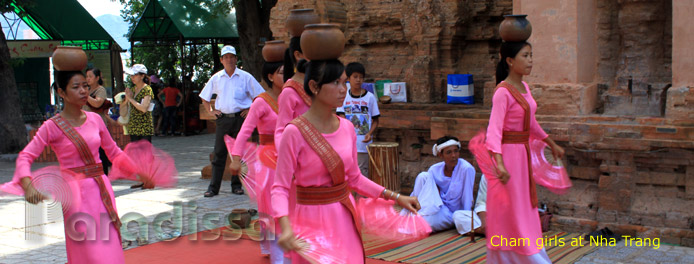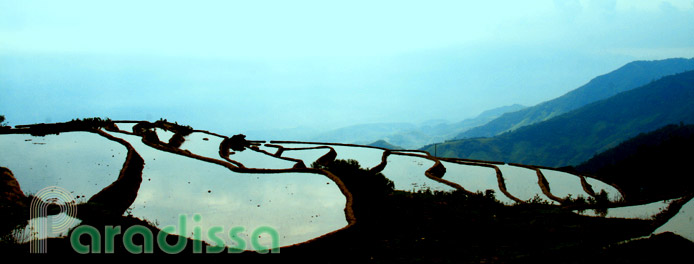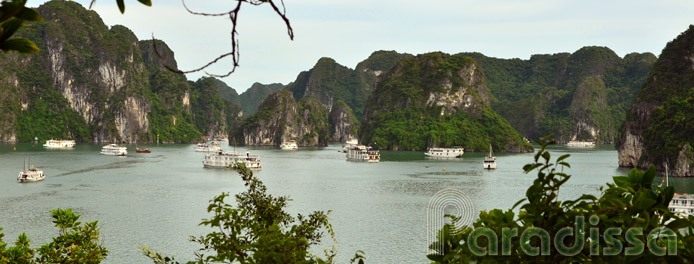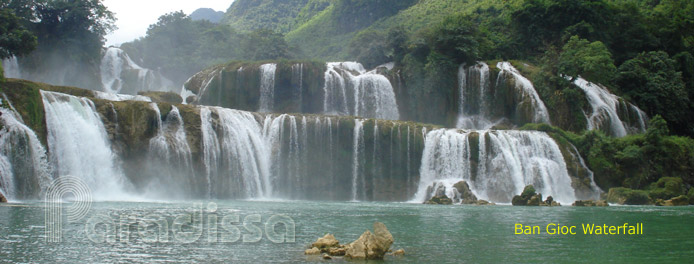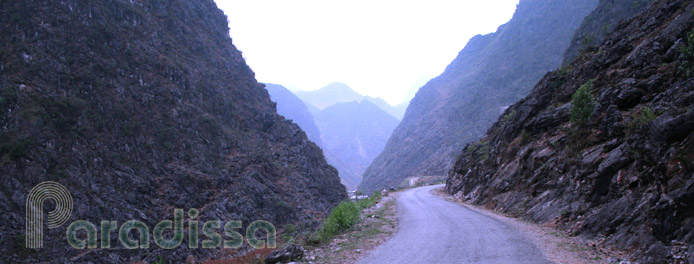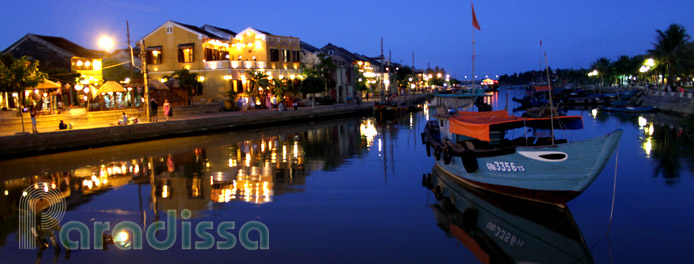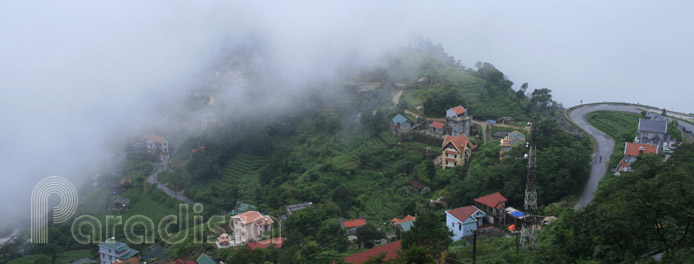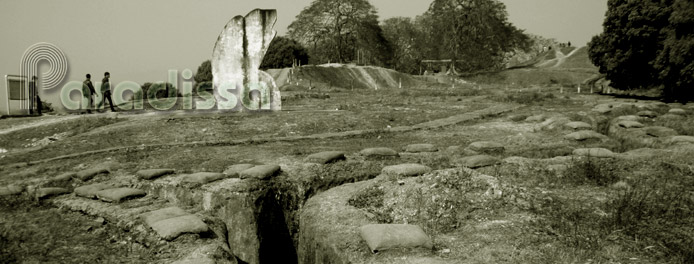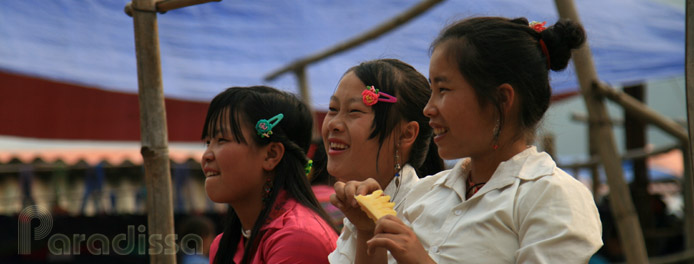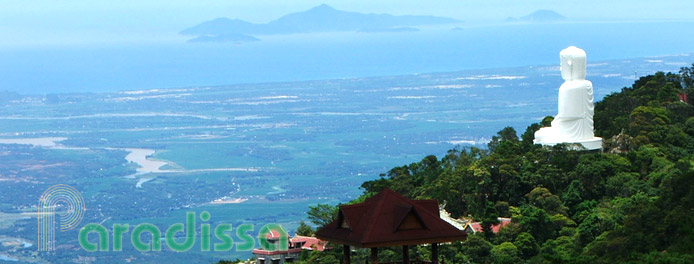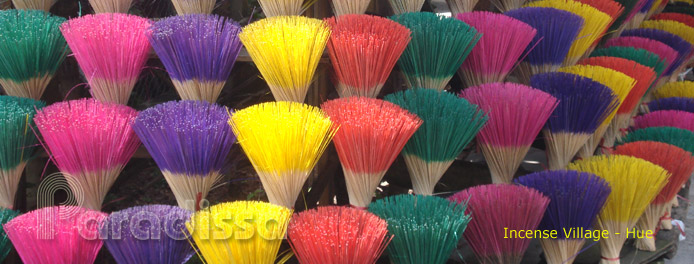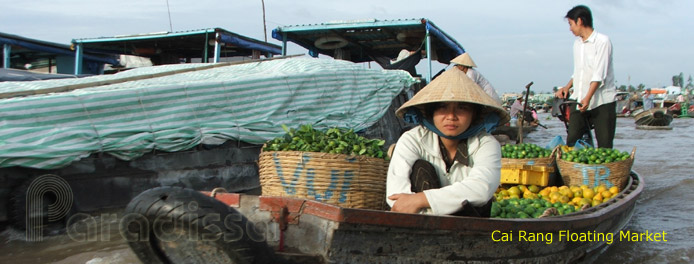Nha Trang Holiday Weather today
Date/time of update: January 7, 2026, 1:52 am, Timezone: GMT+7
Broken Clouds
Temperature: 25°C
Temperature feels like: 25.25°C
Minimum Temperature: 25°C
Maximum Temperature: 25°C
Atmospheric pressure: 1020hPa
Humidity:65%
Visibility: 10000m
Wind speed: 6.95m/sec
Wind Direction: 13 degrees
Cloudiness: 60%
Sunrise: 2026-01-06 11:06:00
Sunset: 2026-01-07 10:32:16
The Po Nagar Tower is the name of the main temple in a complex of Cham towers on a knoll at the river-mouth of the Cai River, 2km north of Nha Trang City. Nowadays, the name Po Nagar is usually used to refer to the whole complex.
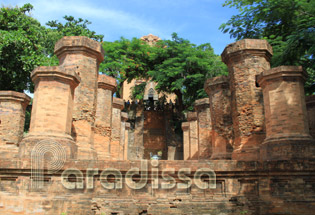
Lines of pillars leading to the main temple of Po Nagar
Travel Guide to Po Nagar Cham Towers, Nha Trang
Champa Kingdom
Nha Trang was called Kauthara, a principality of the ancient Champa Kingdom whose territory stretched in the Central Region of Vietnam, from Quang Binh Province to Binh Thuan Province nowadays.
The population of the kingdom was the Cham who followed mainly Hinduism and Muslim. The Cham community at Kauthara followed Hinduism and they built temples to worship their kings, queens, gods and goddesses. Po Nagar was believed to be the Goddess that taught the local people civilization, taught them to do agricultural work and protected their life.
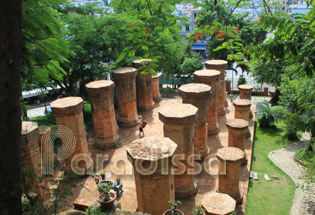
View of the pillars from above
History of the Cham Towers in Nha Trang
Originally, there had been a wooden temple on the same site which was dedicated to Jagadharma, the Queen who ruled Lam Ap Kingdom ( Champa Kingdom) from 646-653 A.D. The temple was later rebuilt of bricks and stones, and was dedicated to Yan Po Nagar (Thien Y Thanh Mau in Vietnamese), who is believed by scholars nowadays, the Goddess Bhagavati (or Uma, Parvati..., God Shiva's wife).
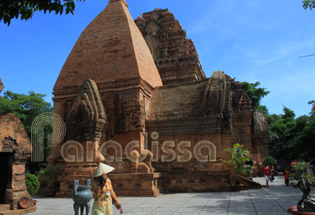
The Po Nagar Cham Towers
In 774, looters from Java came, they destroyed the temple and took away the gold statue of Bhagavati. The Cham King Satyavarman ordered to restore the temple later and works were completed in 784. Later kings also added more towers to the complex. It is said that the complex had had six temples altogether arranged in two parallel lines, only four of them left nowadays.
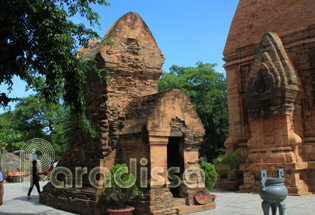
The tower to the south of Po Nagar Tower
Architecture and Decorations of the Cham Towers in Nha Trang
Visiting the Po Nagar from Nha Trang, you can follow Tran Phu Street to the northern outskirt of Nha Trang City. Once you come to the bridge, the Po Nagar can be seen on the far left hand side. All the temples of Po Nagar face east like other Cham temples. You'll start your visit at the gate and follow all the steps to the top of the knoll.
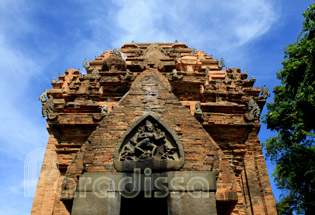
The Goddess Durga on the pediment of Po Nagar Tower
The original gate of the complex was destroyed and you don't see the Gate Tower nowadays. Near the gate, there are lines of brick pillars leading to the main temple. There used to be a roof on top of these pillars but it was destroyed in the past. This was a house without wall for the pilgrims to rest and to get prepared before entering the temples. There is a path with small and steep steps from this house to the main temple, but this path is no more used by the visitors.
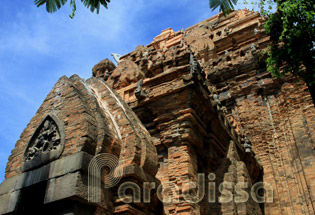
Po Nagar Tower
Getting closer to the pillars and rub your hand on them, you'll see they all have very fine and smooth surface without moss (waterproof bricks...?). And you won't see any glue-like materials in between the bricks. This is still a secret of ancient Cham construction skills. From time to time, someone claims to have found out the glue which is resin from a type of trees available in the Central Region of Vietnam. But, keep in mind that the Cham ruins in Vietnam are still in degradation and there haven't been good solutions protecting them yet. Definitely, it's necessary to understand the materials and techniques the ancient Cham used to protect their architectural heritage.
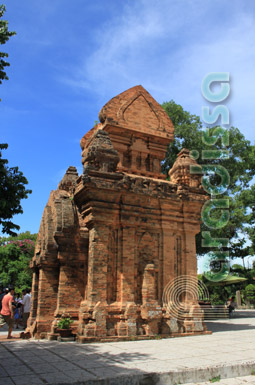
Po Nagar Tower
But, keep in mind that the Cham ruins in Vietnam are still in degradation and there haven't been good solutions protecting them yet. Definitely, it's necessary to understand the materials and techniques the ancient Cham used to protect their architectural heritage.
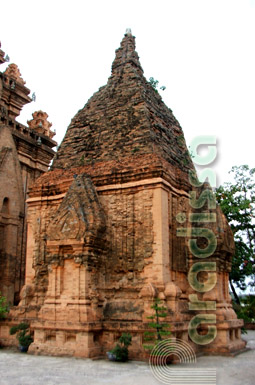
Back view of the tower
On top of the knoll are located the four towers, the Po Nagar Tower is 23m high and is the highest of the towers. This is the main tower which houses a statue of the Goddess Po Nagar, made of black stone. The French had hacked the head off and took it away, the current one is made of cement only. Above the entrance to the main temple, there is a pediment with figure of the Goddess Durga standing on the sacred Nandin Bull with four arms holding a lotus flower, a hatchet and a discus (?).
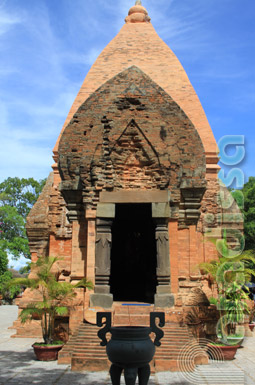
A tower of the Po Nagar Complex
Other towers of the complex are believed to worship the God Shiva, the God Ganesha and the God Skanda. Also, there are different stone steles which date back in 781, 918, 1050... which were erected by the successive kings of the Champa Kingdom to provide more information about the kingdom as well as local customs of the times.
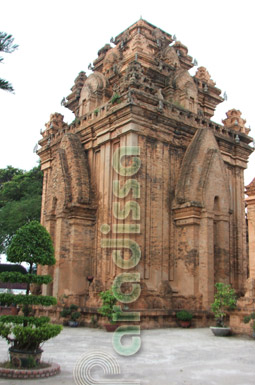
Po Nagar Tower
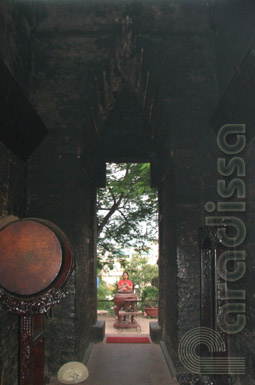
View from inside Po Nagar Tower
Traditional Daily Performances and Annual Festivals
Nowadays, there are performances by the local Cham people showing some aspects of the Cham culture to the visitors at Po Nagar every morning and afternoon. The festival of Po Nagar Temple takes place on 21st-23rd of the 3rd lunar month every year.
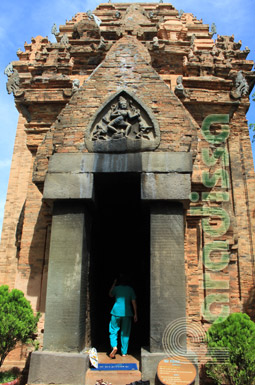
Entrance to the Po Nagar Tower
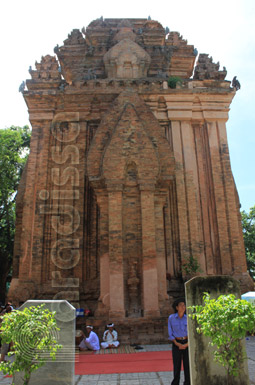
Back side of Po Nagar Tower
The Ponagar Cham Towers are close to Thap Ba Hot-Spring and Chong Promontory. Paradissa host half a day tours or full day tours which visit different key attractions in Nha Trang including the Ponagar Cham Towers.
Nha Trang Average Monthly Rainfall and Temperatures



